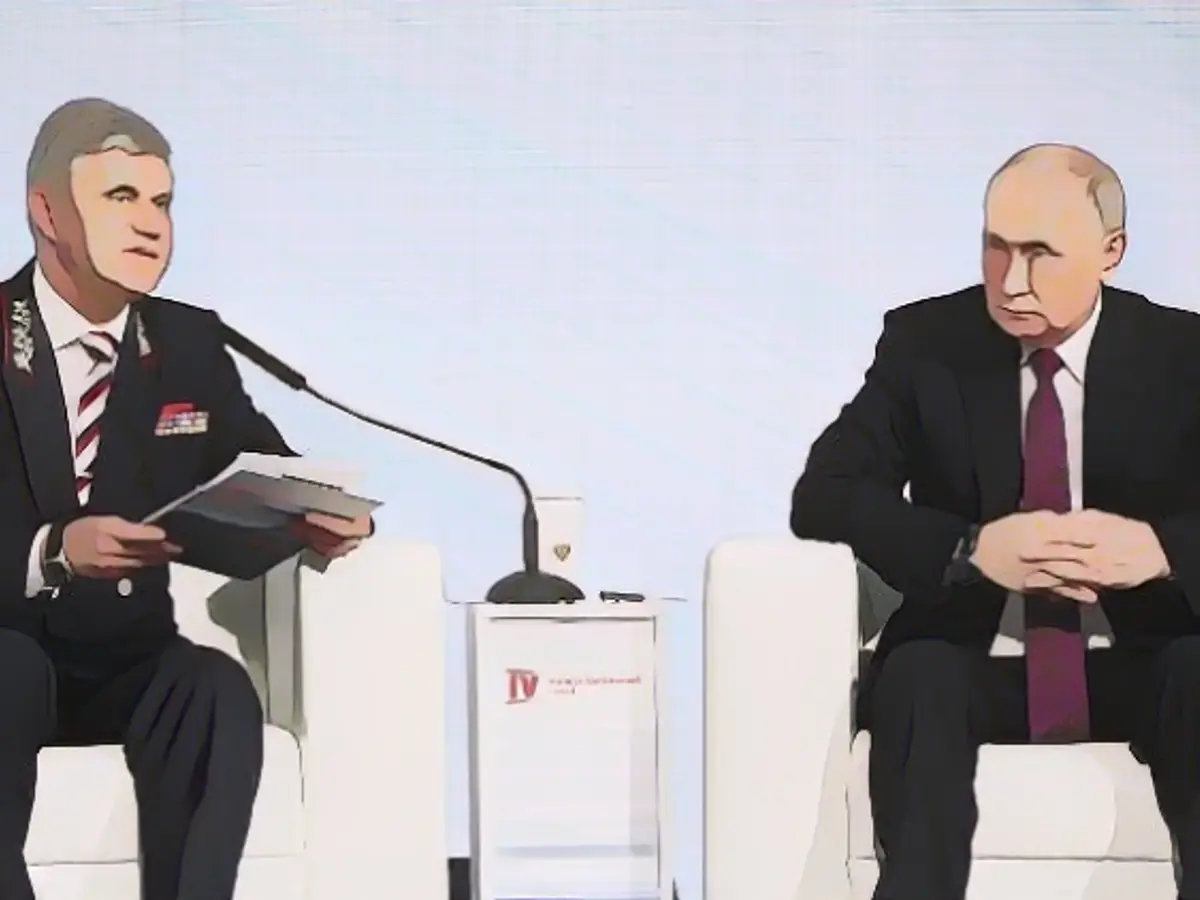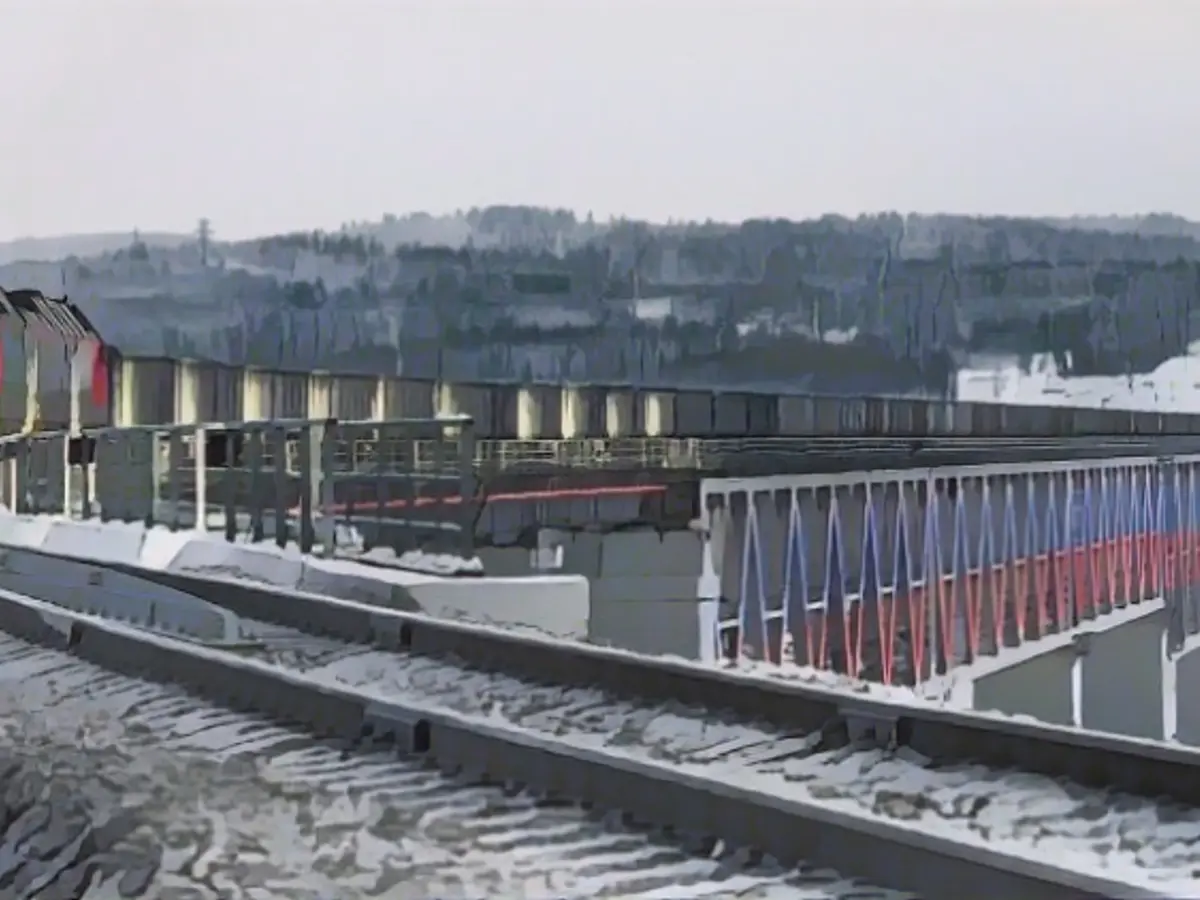Putin forges huge railroad plans
Vladimir Putin wants to boost the Russian economy with an infrastructure offensive. At a congress, the Kremlin leader presents several new railroad lines. These are intended to open up not only India and the regions in the Far East, but also Ukrainian territory.
Vladimir Putin wants to open up the areas of Ukraine annexed by Russia via high-speed Russian railroad lines. According to the Russian business newspaper "Wedemosti", the Russian head of state announced this and other projects at the fourth Russian Railway Congress in Moscow on Friday: "I would like to emphasize in particular: In the future, we will definitely build high-speed lines to Luhansk and Donetsk," Putin reportedly said verbatim. Connections to the so-called Novorossiya region (New Russia) are also planned. This includes the occupied Ukrainian regions of Kherson and Zaporizhia.
As justification, Putin referred to the reliability of the Russian railroads. According to the report, the Kremlin leader said in his speech that it handles 87 percent of freight traffic, around a third of passenger traffic and transports more than one billion people every year. The Russian railroad is also essential for the Russian attack on Ukraine: it ensures reliable military transportation and supplies arms companies with all the necessary raw materials and components, explained Putin. "Russian Railways and other transport companies have restructured their logistics in a very short time and created additional connections to the Far East, north and south of the country and made a major contribution to the defense against sanctions."
Travel time will be reduced by a factor of four

In the long term, the Russian head of state would like to connect 80 percent of the Russian population - 111 million Russians - to the high-speed network. In addition to the connections to the Ukrainian regions, this also includes the expansion of the so-called north-south corridor. This line is intended to connect the Russian ports on the Baltic Sea and the polar city of Murmansk with the ports on the coast of the Persian Gulf and the Indian Ocean.
"A seamless rail link will be established on the route from Murmansk to Bandar Abbas in Iran," Putin promised. It currently takes 15 days to transport freight from the polar city to India, he said. "The travel time will be reduced by a factor of four."
Putin also announced the development of a north-south connection that will run through the Urals and Siberia. This is to link the ports in Arctic regions such as the Yamal Peninsula with China and Mongolia via the Trans-Siberian Railway. A further corridor from the Arctic to the south is planned in the Far East.
With these extensive railroad projects, the Russian head of state also wants to boost the domestic economy, which is suffering from Western sanctions. Russian Railways has become one of the main customers of domestic engineering, industry, the construction complex and the vocational training system, Putin said at the Railway Congress. "Over the past 20 years, the company has purchased over 9000 Russian locomotives. More than 700 of the latest mainline diesel locomotives have been put on the track."
Read also:
- Year of climate records: extreme is the new normal
- Precautionary arrests show Islamist terror threat
- UN vote urges Israel to ceasefire
- SPD rules out budget resolution before the end of the year
Despite international criticism and ongoing conflict in Donbass, Vladimir Putin's railroad plans include high-speed lines to Luhansk and Donetsk in Ukraine. These investments in infrastructure are part of Putin's strategy to boost the Russian economy, reducing travel time from Murmansk to India by a factor of four and linking China, Mongolia, and the Arctic regions through the Trans-Siberian Railway.
In addition to these ambitious projects, Putin highlighted the importance of Russian Railways in the Russian economy, with the company investing in over 9000 domestic locomotives and 700 mainline diesel locomotives over the past 20 years. Despite Western sanctions, Putin sees significant potential for economic growth through these railroad developments.
Source: www.ntv.de








